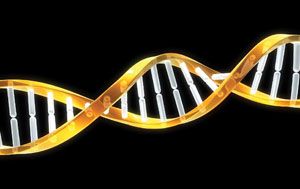Study Aims to Turn off Tumor Diversification That Leads to Drug Resistance
The development of drug resistance in cancer cells presents a major obstacle to cancer treatments of all types, including small molecule inhibitors, monoclonal antibodies, and hormone therapy.
The development of drug resistance in cancer cells presents a major obstacle to cancer treatments of all types, including small molecule inhibitors, monoclonal antibodies, and hormone therapy.

The development of drug resistance in cancer cells presents a major obstacle to cancer treatments of all types, including small molecule inhibitors, monoclonal antibodies, and hormone therapy. Use of combinatorial approaches that target different cell mechanisms have met with some success in overcoming drug resistance, but the underlying problem of diversification in cancer cell populations remains.
Researchers at the Salk Institute in La Jolla, California and at the University of California, Santa Cruz examined cancer cell heterogeneity using a novel technique that enables sequencing the transcriptomes of single cells as well as cell populations. Their work, published October 20, 2014, describes the extent to which individual cells in a population differ, and how this translates to adaptability under stressed conditions, such as chemotherapy.1
Beverly Emerson, professor of Salk’s Regulatory Biology Laboratory and senior author of the paper, explains, “Cancer isn’t one cell but it’s an ecosystem, a community of cells. This study begins the groundwork for potentially finding a way to understand and dial back cell diversity and adaptability during chemotherapy to decrease drug resistance.”
The researchers examined 3 groups of breast cancer cells: untreated, exposed to paclitaxel (stressed), and drug tolerant (from a clonal population that proliferated after paclitaxel exposure). Comparison of RNA variations between single cells and across cell populations showed a surprising return to diversity in the drug-tolerant group in only a few generations.
Variations in RNA were apparent at the very early stages of evolution of the monoclonal population. As an indication of the extent of diversity, the majority of RNA variants observed from a single cell were unique to that cell; RNA variations shared among cells tended to be common, previously characterized single nucleotide polymorphisms (SNPs). Of the specific RNA variants found in the drug-tolerant cells, some were located in genes involved in paclitaxel resistance and others were in genes involved in cell adhesion and cell surface signaling.
A large proportion of cells derived from a single, drug resistant cell reverted back to drug sensitivity within 5 generations, indicating that heterogeneity among the population was restored quickly.
Interestingly, a larger proportion of precancerous cells became drug-resistant after paclitaxel exposure. Fernando Lopez-Diaz, lead author on the study and staff scientist at Salk offered one possible explanation, “Existing precancerous cells in tissues, indolent at the time of treatment, could evolve to a more aggressive phenotype after being exposed as “bystanders” to chemotherapy. Chemotherapy may actually push the precancerous, compromised cells to become tumorigenic.”
How do cancer cells adapt so rapidly and survive acute high stress environments, such as that presented by chemotherapy? One potential mechanism suggested by Emerson is mutation at the level of transcription, which has been observed in bacteria and occurs by misincorporation of nucleotides or transcriptional slippage.
The analysis presented in this study examined the RNA transcripts, but not the genomic DNA from the same cell. Says Emerson, “We do not yet know whether the RNA variants we observed resulted from DNA or RNA mutation. We plan to adapt this technology to distinguish RNA from DNA mutations in the same single cell. We hope to understand the basis of rapid evolution, in contrast to slower adaptation to chronic, low-level stress. We will examine whether stress-induced transcriptional mutation occurs in human cancer cells.”
This research shows cancer cells to be a moving target for existing treatments, evidenced by heightened transcription variability among cells. The solution may be to find the switch that turns off tumor diversification. Emerson considers diversification as an important element for evolution and survival. “Diversification could be a communal decision among the tumor cell population rather than the decision of individual cells. We are very interested in understanding communication signals within a tumor ecosystem.”
Adds Lopez-Diaz, “This research is not just about finding another pathway, but rather a completely different way of looking at cancer and how cells grow, adapt and evolve. We hope to better understand how cancer cells generate diversity, which can lead new and more successful therapies in the future.”
- Lee MC, Lopez-Diaz FJ, Khan SY, et al. Single-cell analyses of transcriptional heterogeneity during drug tolerance transition in cancer cells by RNA sequencing.Proc. Natl. Acad. Sci.2014. Early Edition. http://www.pnas.org/content/early/2014/10/21/1404656111